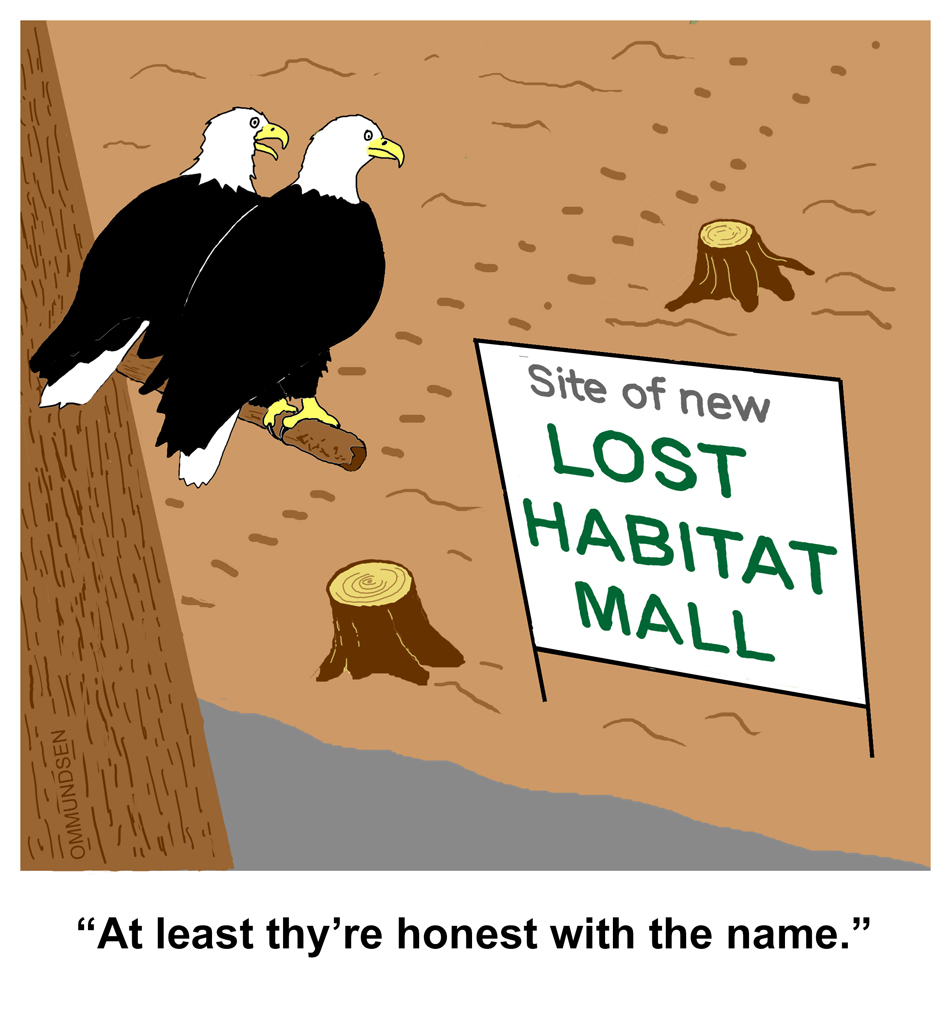ECOSYSTEM HEALTH
Ecosystem health is a rather nebulous normative concept. According to Wikipedia:
Critics worry that ecosystem health, a “value-laden construct,” is often “passed off as science to unsuspecting policy makers and the public.”
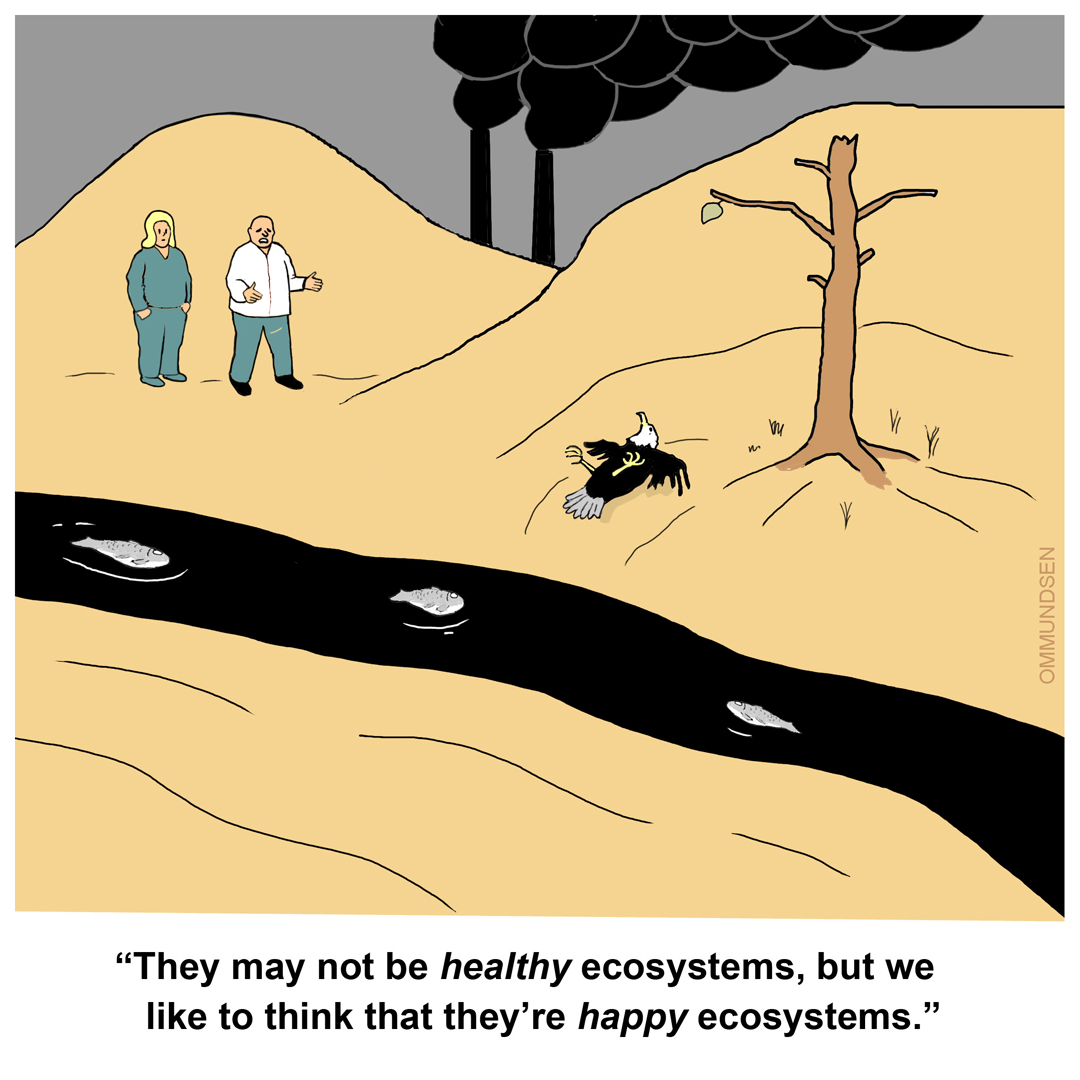
EXTINCTION
The majority of plants and animals on earth became extinct at the end of the Cretaceous geological period.
Much of this mass extinction has been blamed on the aftermath of an asteroid impact near Yucatan, a location that
time travellers would be well advised to avoid.
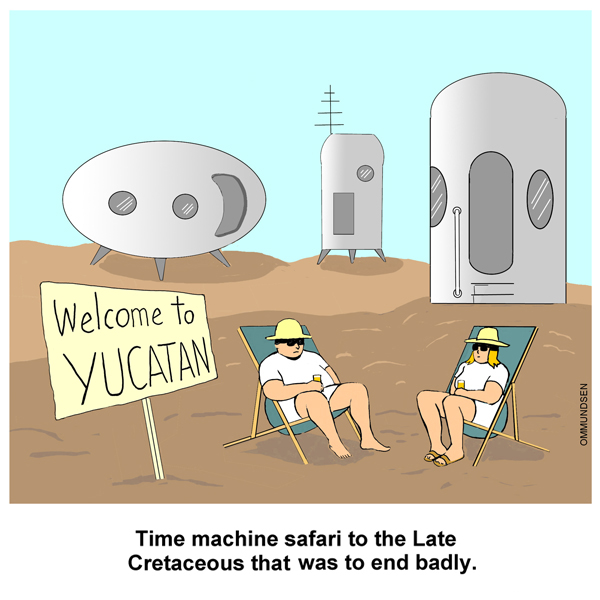
Recently, amphibian populations worldwide have declined significantly. Some 37 species are listed as extinct, 167 listed as “missing” and almost 2000 species are considered to be threatened with extinction.
Biotic attrition refers to the loss of species diversity including situations where extinction occurs. The frogs in the cartoon prefer the term biotic attrition as a euphemism for extinction.

FUNGI IMPERFECTI
Fungi, such as mushrooms, yeasts, and molds, are vital parts of nature. They decompose dead trees, logs, fallen
leaves, and other organic matter, and convey nutrients from the soil to the roots of plants. Fungi are neither
plant nor animal, but their cell walls include chitin, a material found in the body covering of
insects, crabs, lobsters, shrimps, and other arthropods. Fungi often grow in the form of long filaments,
such as bread mold, but some fungi have fleshy reproductive structures termed mushrooms and conks.
Some fungi are referred to as Fungi Imperfecti, which means that
they never have been observed to reproduce sexually (mating), but do
reproduce by shedding "spores," seen below in clusters at the top of each upright reproductive structure.
Examples of imperfect fungi are Penicillium, from which the antibiotic is derived, and Aspergillus,
the cause of the disease aspergillosis in humans and wildlife. The first cartoon shows a dispute, suggesting that
these fungi are indeed less than perfect.
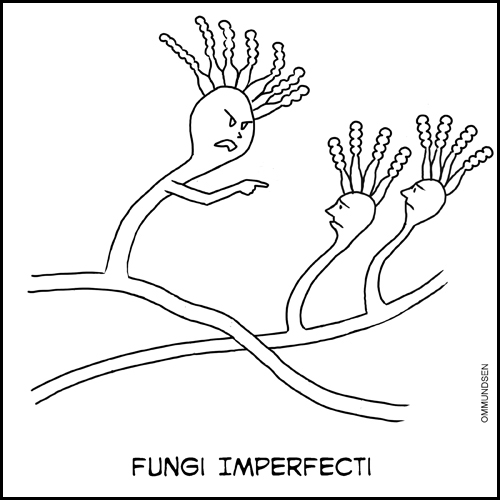
Ciliates are not fungi, but are single-celled creatures that have hair-like
structures ("cilia," singular "cilium") used in swimming and sensation.
Ciliates consume bacteria, algae, detritus, and other protozoans, and some can cause disease in animals, including humans.
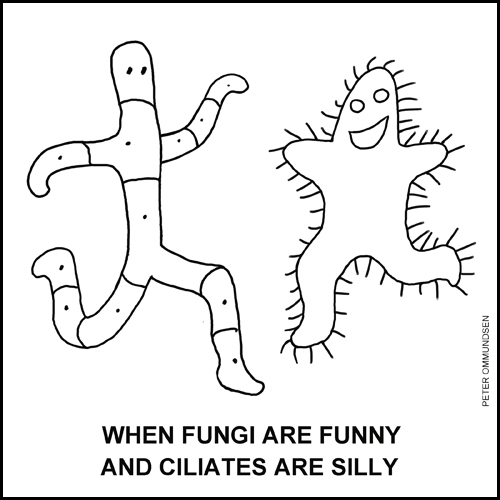
Mycology is the study of fungi, which are classified in the kingdom Mycota.
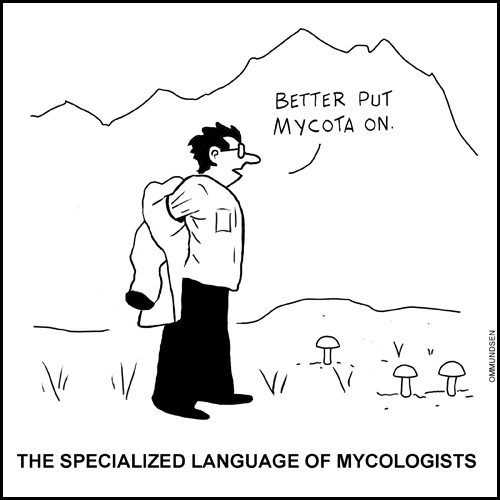
EXTENDED PHENOTYPE
Phenotype, such as eye colour, refers to observable characteristics of an animal, plant, or other organism. The phenotype can be determined by environment, genes, or both. Traditionally phenotypes were described in terms of appearance, functioning, and behavior. Richard Dawkins expanded the concept to include objects in the environment that reflect the action of the genes, such as spider webs, bird nests, beaver dams, and termite mounds. (“Extended phenotypes” -- a motorcycle is of course not really an extended phenotype.)
Other examples of extended phenotypes include the behaviours of animals influenced by parasites, behaviours that can benefit the parasites. In such cases it is the genes of the parasites that determine the behaviour of the host animal. Dawkins book, The Extended Phenotype The Long Reach of the Gene, is well worth reading.

THE FALL OF GLUTEN
Fear of gluten is widespread and has resulted in massive reformulation of food products and food advertising. Yet it is unclear to what extent non-celiac gluten sensitivity (NCGS) is a fad.
Gluten aversion is a good example of cultural change occurring faster than the supporting science. In fact double-blind challenges (feeding people gluten when they are unaware of whether they or not they are being fed gluten) have produced mixed results, and it may be some time before there is sufficeint evidence to determine the incidence of gluten sensitivity.
A recent commentary on this research [“Noncoeliac gluten sensitivity – the controversy rages on”, Alimentary Pharmacology & Therapeutics Volume 42, Issue 10, page 1234] claims that “the story is becoming much stronger that NCGS is a very uncommon entity, if it exists at all.”
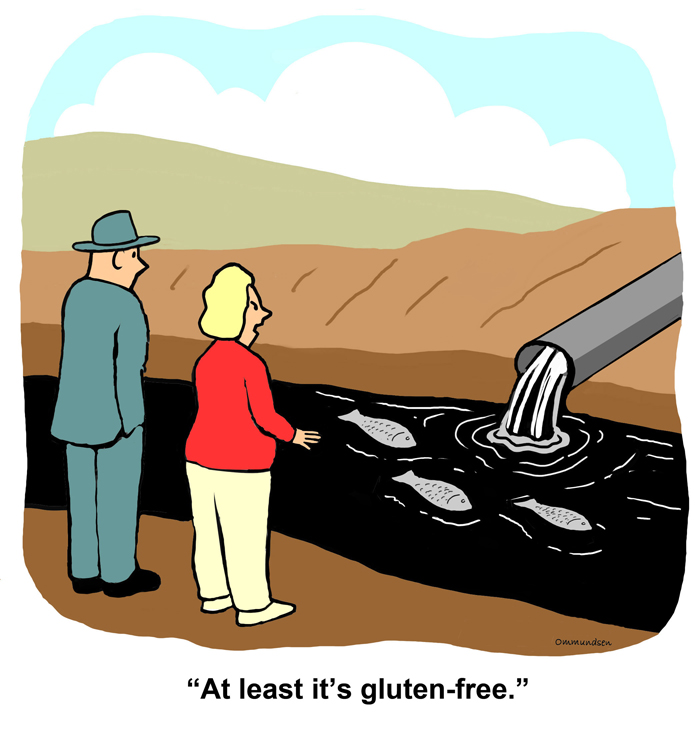
DEATH BY A THOUSAND CUTS
A common argument against curtailing a particular industry (think oil sands) is that it is responsible for but a fraction of total global emissions.
In fact climate change is the product of a multitude of players, and climate mitigation, like lifting a car, requires the combined efforts of all industries.

DROUGHT AND WATER SUSTAINABILITY
Prolonged droughts have driven agricultural industries to draw down groundwater and to contest water allocations for fish habitat.
This cartoon parodies the illusion of prospering in the face of poor prognosis for the water supply. It also illuminates the challenge of multiple use of a diminishing resource.
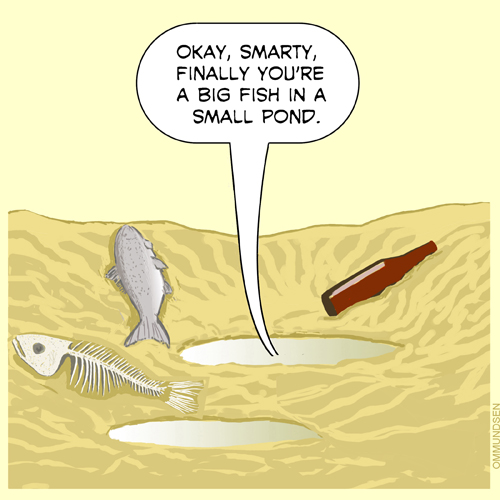
WHAT’S IN A NAME?
Ecological literature is awash in invasion terminology – invasive species, exotic species, alien species, naturalized species, etc. Some introduced species, such as rabbits in Australia, have caused considerable damage to native ecosystems, but this is not the case for all exotic species.
An article titled “Don’t judge species by their origins” that appeared in the periodical Nature in 2011 triggered considerable debate that is ongoing. Some scientists are more tolerant than others of “novel ecosystems” (containing both native and nonindigenous species). The cartoon below caricatures this debate. Cartoon names? Jason abandoned Medea when the king of Corinth offered his daughter.
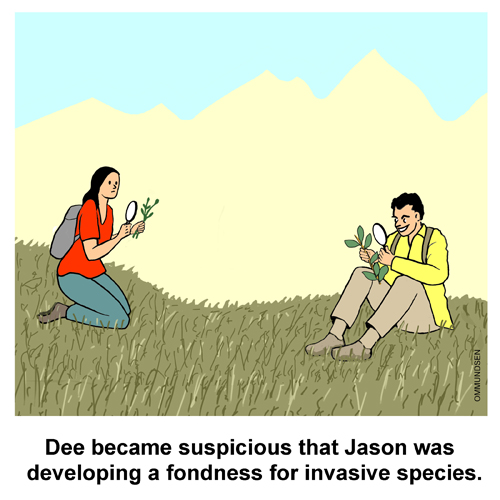

THE ART OF ROHAN CHAKRAVARTY
Few cartoonists specialize in wildlife and environmental comics. One such person is the prolific cartoonist and illustrator Rohan Chakravarty. Rohan draws a comic titled Green Humour that pokes fun at wildlife, naturalists, and polluters, and spotlights conservation issues.
He also creates meticulous wildlife caricatures (see pangolin example below) and his splendid posters and wildlife art have aided many conservation campaigns. Check out his work!
Here is one of Rohan's cartoons:

And here is one of his caricatures:

www.greenhumour.com
COMPOSITION, COLOUR, AND PERSPECTIVE
A cartoon may capture the attention of a reader for mere seconds, so it must be conceived as a diagram that efficiently leads the viewer through the image. Traditional rules of composition, colour, and perspective may be sacrificed to this end. Background objects may be magnified to make them more visible in small reproductions.
The original drawings of Ecology Cartoons are seven inches wide, but in some magazines they are reduced to less than three inches. To survive such reduction, the original images must be clean and simple, without detailing, and without clutter. Speaking characters may be highlighted using vivid colors and by showing hand gestures.
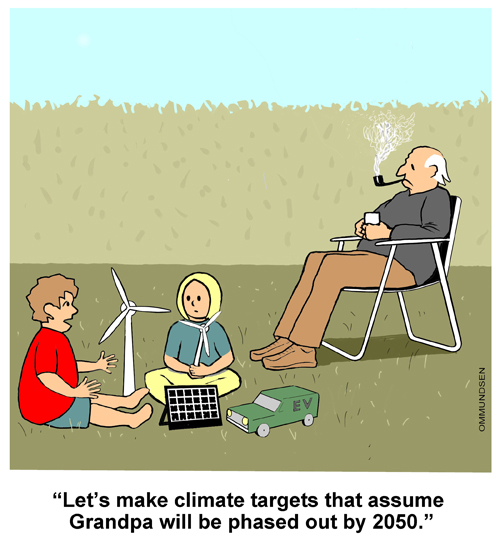
WHAT IS SATIRE?
Satire is a form of critical social commentary employing irony through such devices as exaggeration, understatement, and parody. A key feature of
satire is that criticism is implicit. The reader must infer a target of criticism, which may well differ from the author's intent. The consequence of satire
may range from humour to outrage. Humour is not a requirement of satire.
The cartoon below draws attention to the fact that a climatic greenhouse effect has been understood as far back as the 1800s, a skewering of political foot-dragging on climate change mitigation (my intent).
But how does a climate-change skeptic respond to this cartoon? Readers are prone to interpret cartoons in a manner favorable to their belief system ("confirmation bias"), and some readers have viewed this cartoon as a skewering of climate scientists as alarmists.

My intent in the next cartoon was satirize climate change denialists, many of whom are less than rigorous in their arguments. In this case irony is used to present a character who actually made the effort to review the mathematics of a climate change model. Of course a climate denialist may interpret the cartoon as scorn for computer climate models.
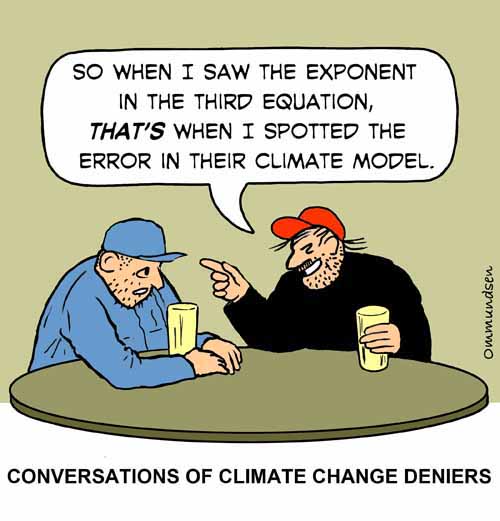
ACADEMIC PUBLISHING
Academic journals are awash with multiple articles by the same author that barely differ and that are all
derived from the same research project. The goal is of course resumé-building rather than creating ease of access to the research results.
Similar chicanery can be involved in leveraging multiple-authorship, where a long string of authors is listed for a single article, some of whom
may have had minimal contribution to the research but who will reciprocate when they publish their own research.
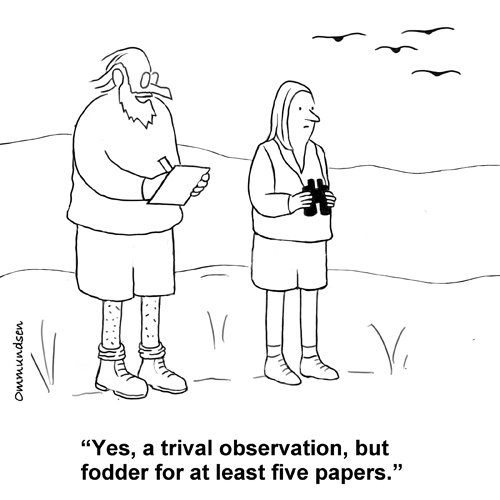
THE NERO SYNDROME
The environmental movement has largely ignored the effects of population growth and a growth-dependent economy as drivers of climate change and biodiversity loss.
Population growth cancels the effect of emissions reductions. Some 200,000 people are born each day in excess of those that die, overwhelming efforts to shrink the total planetary carbon footprint. The birth of a single American child can create a carbon legacy through future generations of as much as 9,000 metric tonnes. For most people, family size will be the greatest single determinant of their environmental impact. The birth rates of Canada and the US exceed death rates by at least 1.5 x.
World population is now over seven billion whereas an ecologically optimum population is thought to be around two billion. The amount of land now devoted to cropland and pastureland is equivalent to the combined areas of Africa and South America (Countdown: Our Last, Best Hope for a Future on Earth? ).
).
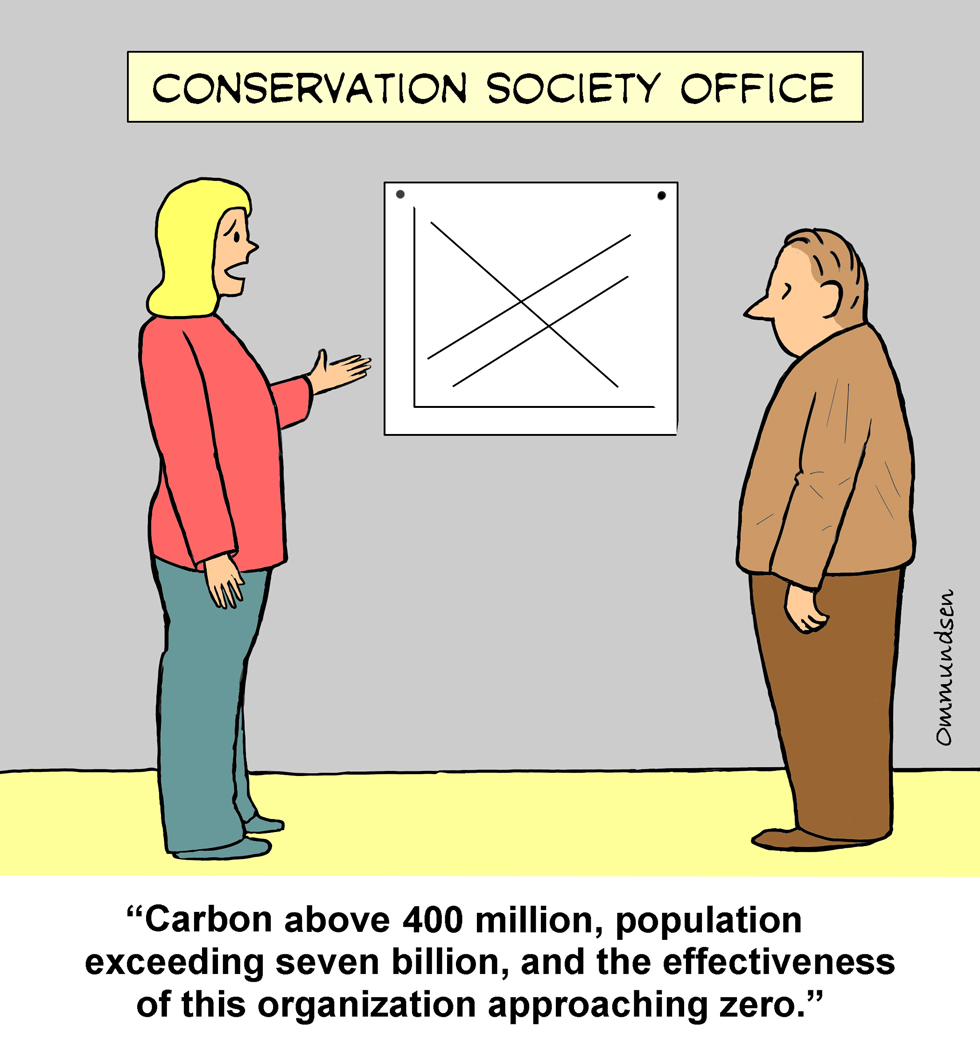
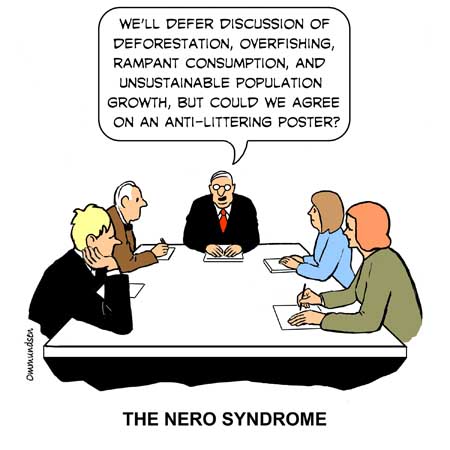
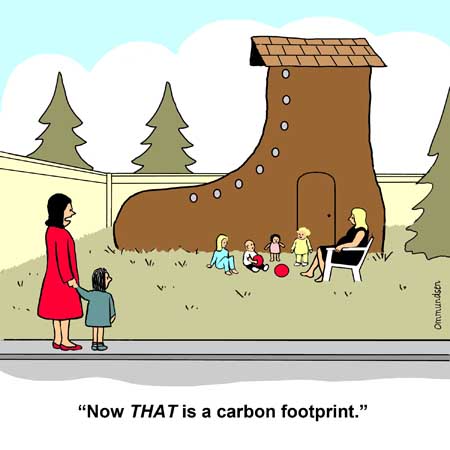
The FANTASY in the following cartoon is in the mind of the senator as well as in the mind of the presenter, as it is astonishing to imagine a government taking bold action to mitigate climate change.

THE ECOLOGY OF FEAR
”Ecology of fear” is jargon describing intimidation of one species by another, affecting the distribution and abundance of the submissive species. For example, the presence of wolves may displace elk and coyotes. This can create a domino effect. If elk avoid certain habitats for fear of wolves, plants may thrive rather than be suppressed by elk browsing. If a wolf-elk-tree effect were demonstrated in an ecosystem, it would be considered a “trophic cascade.”
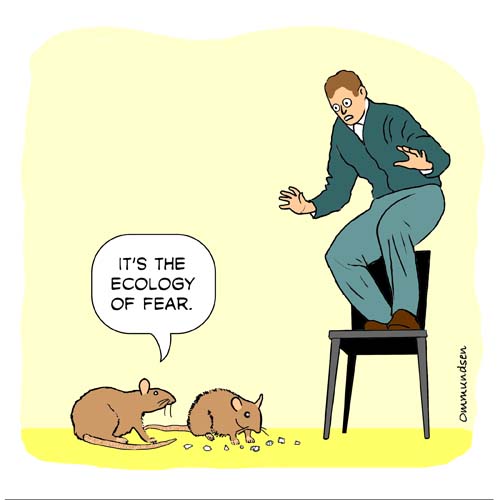

FERTILIZER AND GREENHOUSE GASES
Fixing nitrogen means using nitrogen gas to make ammonia, the basis of commercial nitrogen fertilizer production. Since the 1950s massive amounts of synthetic nitrogen fertilizer have been applied to agricultural lands, resulting in pollution of waterways and emission of nitrous oxide, a potent greenhouse gas with 300 x the impact per unit weight as carbon dioxide. Commercial fertilizer production relies on the Haber-Bosch process, which transformed agriculture allowing a human population explosion.

NATURAL DISTURBANCE REGIME
A natural disturbance regime in ecology is a periodic natural force such as fire, wind, disease, or flooding that shapes the structure of an ecosystem. For example, a healthy Ponderosa Pine forest can be maintained by a short fire cycle that deters competition from less fire-resistant species.
Ecologists examine tree rings of fire-resistant trees, which can tell a story of the history of the climate and natural fire interval over centuries. “Annus Mirabilis,” meaning wonderful year, was a poem by John Dryden referring to 1666, the year of the Great Fire of London.

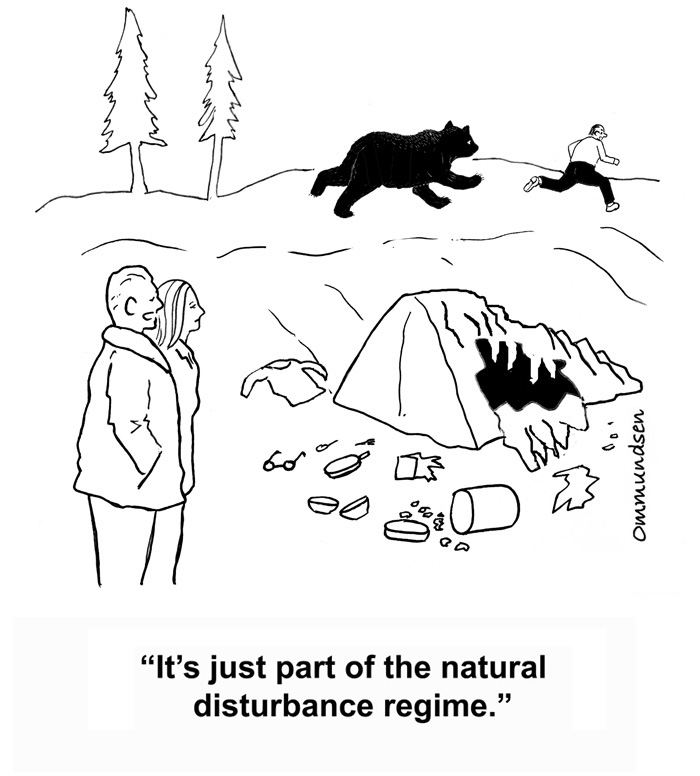
RECIPROCITY AND ENVIRONMENTAL ETHICS
Grouch Marx supposedly said, "Why should I care about future generations? What have they ever done for me?" Intergenerational justice is a subject of considerable scholarship and includes the work of Derek Parfit. Legislators may show great hypocrisy in their intergenerational concerns.


SCIENTIFIC RIGOR
Scientific research has in many cases been biased by questionable assumptions, inadequate measurement techniques, and erroneous computer models, as satirized in these cartoons. In the first example, scientists are using radio collars to test whether bears prefer certain habitats. The bears are toying with the scientists by deliberately changing their habitat use pattern. If the scientists falsely conclude that there is no difference in utilization between two habitats, that would be a type II error (a false negative).
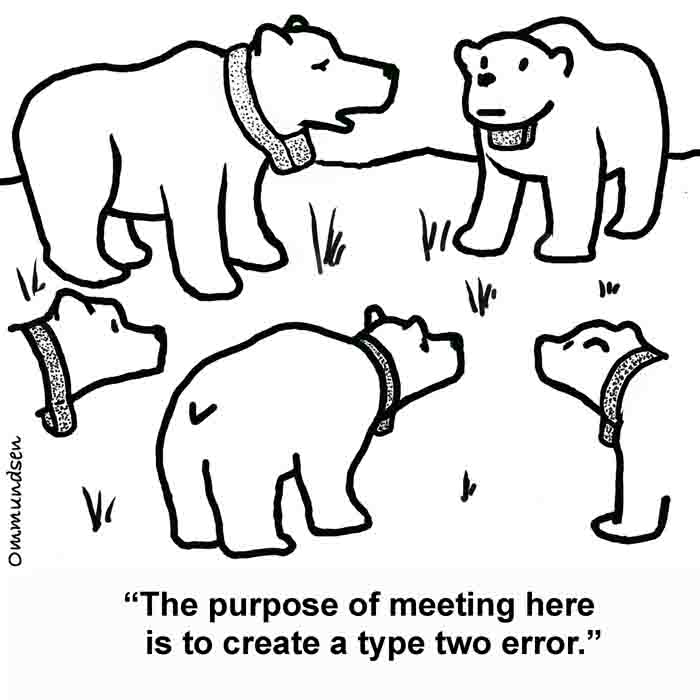
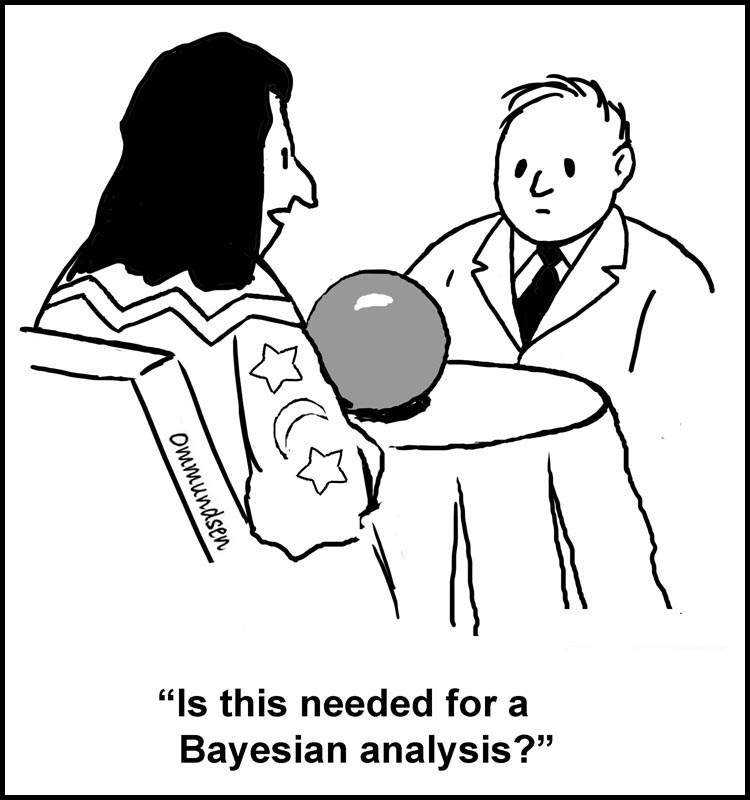
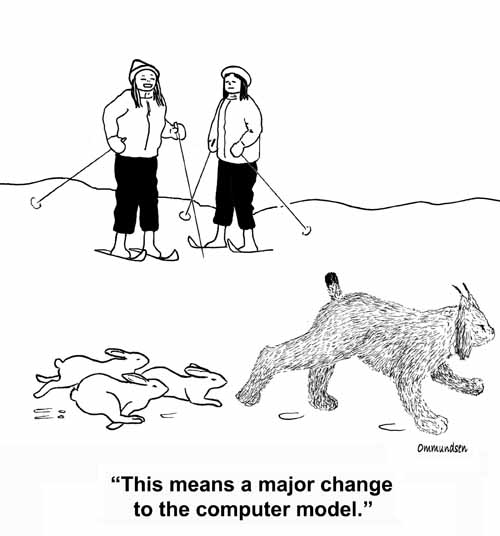
To see more cartoons, visit the ECOLOGY CARTOONS web site.
All images copyright 2016 Peter Ommundsen
To contact Peter Ommundsen click
HERE
or email cartooning at-sign shaw dot ca
